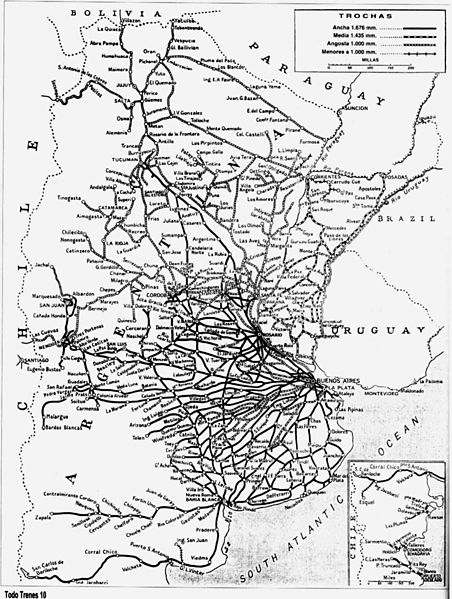Rail transport in Argentina
The Argentine railway network consisted of a 47,000 km (29,204 mi) network at the end of the Second World War and was, in its time, one of the most extensive and prosperous in the world. However, with the increase in highway construction, there followed a sharp decline in railway profitability, leading to the break-up in 1993 of Ferrocarriles Argentinos (FA), the state railroad corporation. During the period following privatisation, private and provincial railway companies were created and resurrected some of the major passenger routes that FA once operated.
Argentina's rail network at its greatest extent (c. 1950)
Argentina's rail network at its greatest extent (c. 1950)
Del Parque station built in 1857, later closed in 1883.
Advertisement for the Central Argentine Railway (1913).
Railway privatisation in Argentina
Railway privatisation in Argentina was a process which began in 1989 under the presidency of Carlos Menem, following a series of neoliberal economic reforms. This primarily consisted of breaking up the state-owned railway company Ferrocarriles Argentinos (FA) and allowing the former lines to be operated by private companies instead of the state.
Carlos Menem's administration carried out the privatisation process
Sarmiento Railway rolling stock during the FA era
Ferrosur Roca was granted Roca Railway
Nuevo Central Argentino took over Mitre Railway







